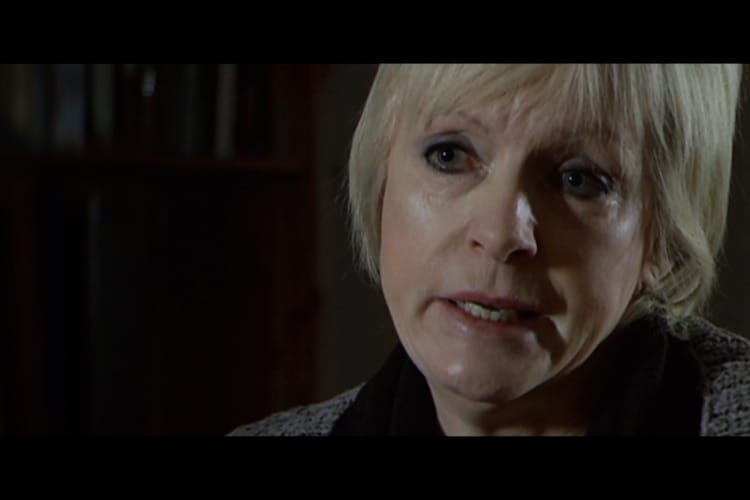What’s the best way to tell area residents about plans for a new asylum shelter nearby?
The government should tell communities directly about plans for new asylum shelters, some activists and politicians say.
This portrait of the noted Provisional IRA member combines fascinating interviews with occasionally hokey dramatisation.

Maurice Sweeney’s I, Dolours tells the story of Dolours Price, the noted Provisional IRA member, mixing archival film, dramatisations and rarely seen interview footage in a documentary that feels blurry around the edges.
The majority of I, Dolours’s footage is taken from a series of filmed interviews conducted by journalist Ed Moloney. Moloney is the former director of an oral history archive at Boston College, and along with researchers, he interviewed Dolours Price and her former comrade Brendan Hughes between 2001 and 2006.
Price agreed to the interview under the condition that the footage not be released until after her death.
Director Maurice Sweeney structures the film around the Boston College footage, which serves as the film’s backbone with dramatisations of events and archive footage fleshing out the picture.
The quality of Sweeney’s own contributions to the picture vary in quality. Many of the reenactments tend to look more like a horror film than actuality. Sometimes this works well – when Dolours is force-fed in prison the ordeal is shown to us as a distressing quickly cut montage. The rapid succession of jumps coupled with zooms and Sweeney’s use of a shaking camera make for queasy watching, and to this end it’s a fitting stylistic choice.
At other times the dramatisations came off as hokey. Take as an example, I, Dolours’s opening sequence featuring an older Dolours rattled and panicked by a news bulletin on the radio which unintentionally channels Ryan O’Neal’s infamous performance from Tough Guys Don’t Dance.

The trouble for Sweeney and the other members of I, Dolours’s cast and crew is the Boston College interview. It’s the most fascinating aspect of the film.
Dolours Price is a formidable figure. She gives candid answers to Moloney’s questions, and in doing so shows herself to be steadfast in what she believes, strong-headed and largely unrepentant for her past deeds.
Through the course of the film we see scenes of Price moving explosives past British checkpoints, transporting people to be “disappeared”, and carrying out a large-scale bombing mission.
But, in a strange way, these dramatisations are far less chilling than the way in which Dolours talks of them, as necessary acts of war.
There’s an immediacy to the footage of interviews with her, shot from a static position with few zooms or close-ups it plays out like a police interrogation, only one feels that with the caveats around the film’s release, we are seeing a Dolours with nothing to lose. Her frankness is disarming, and what emerges through the course of the picture is a view of a terrifying woman.
When the action moves away from the interview to archival footage or a flashback sequence with actors I found myself impatiently waiting for the next snippet of Moloney’s interview. The inter titles and archive footage are presented plainly. There’s little done to pull the audience into the history of the film, visual flourishes are saved for the dramatisations which show Sweeney’s authorship, but this leaves the other elements of the film feeling vague.
Even though we move through Dolours’s story in a mostly linear fashion it’s too easy to get muddled by the presentation.
The bridging dramatisations vary in quality. They’re by and large useful in helping to give life to Dolours’s recollections but sometimes tread into Tuesday night Alibi Channel fare. One sequence that stuck with me shows Dolours helping her aunt Bridie Dolan smoke a cigarette. Aunt Bridie, Dolours explains, was blinded and had lost both her hands transporting an IRA explosive.
As with the force-feeding sequence later in the film, there’s a touch of horror filmmaking to the framing of this sequence. Dolours describes her aunt as a “living martyr” to the republican cause, and Sweeney underscores this with the ghostly realisation of this scene.
From what Dolours tells Moloney of her early life there is a sense that her destiny, and the destiny of her younger sister Marion Price, was predetermined. The cause was a familial concern, with Dolours’s mother serving time in prison as well.
Through the course of the documentary Dolours outlines her involvement in a car bombing at the Old Bailey, her subsequent incarceration, hunger strike and release from prison. The handling of the prison sequences highlights the good and bad in the I, Dolours approach to its material.
Throughout these sequences we hear voiceover from Lorna Larkin, who portrays a younger Dolours. Larkin’s narration takes the form of diary entries and letters read aloud to us. At her lowest point we see Dolours hallucinating in her jail cell, severely weakened by sickness and hunger, and the voiceover appears to express regret and disillusionment with the comrades on the outside.

There is also a suggestion, in the acting at least, that Price is remorseful. The real Dolours does not express such feelings in the interview footage however. And so there’s a haziness to the narrative.
We feel sympathy for Dolours, for her hardships and her seemingly pre-determined path in life. Sympathy and pity come readily enough, but empathy is a different story.
Late into the film, Dolours speaks of her involvement with the “unknowns” and as a driver for “the disappeared”, including Joe Lynskey (Enda Oates). Here, we see for the first time something resembling regret, and yet, there is always the knowledge that for Dolours Price the fight came before anything else. I, Dolours wants for a redemptive ending for Dolours, and by its close the closest we come is a momentary lapse of Price’s steely exterior.
We can speculate as to the veracity of the persona that Price puts forward versus the reality of her later life but the take-away for most will be a view of a life wasted away by hate.